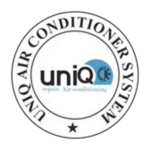AC Air Filter Cleaning: The Key to Cool, Clean Air
Air conditioning systems play a pivotal role in keeping our homes comfortable during hot summer months. To ensure optimal performance, it’s essential to maintain your AC unit, and one crucial aspect of that maintenance is cleaning the air filter. AC air filters are responsible for trapping dust, pollen, pet dander, and other contaminants, ensuring the air you breathe is clean and healthy. Over time, these filters can become clogged, leading to reduced efficiency and indoor air quality. In this comprehensive guide, we will explore the importance of AC air filter cleaning, signs that it’s time for cleaning, the cleaning process, and tips for maintaining clean air filters.
The Role of AC Air Filters
1.1 Understanding Air Filters
Air filters in your AC system are designed to serve several vital functions:
- Air Purification: Filters capture particles like dust, pollen, and allergens, preventing them from circulating through your home.
- HVAC System Protection: Air filters keep contaminants from entering sensitive components, such as the evaporator coil and blower motor, extending the lifespan of your AC unit.
- Energy Efficiency: Clean filters allow for better airflow, reducing the strain on the AC system and helping it operate efficiently.
1.2 Types of AC Air Filters
There are various types of air filters available for AC systems, including:
- Fiberglass Filters: These are cost-effective and capture larger particles but may not be as effective at trapping smaller contaminants.
- Pleated Filters: More efficient than fiberglass filters, pleated filters have a larger surface area and can capture smaller particles.
- HEPA Filters: High-Efficiency Particulate Air (HEPA) filters are the most effective at trapping particles, including allergens and bacteria, but may require more frequent replacement.
Signs That Your AC Air Filter Needs Cleaning
Knowing when to clean your AC air filter is crucial for maintaining optimal indoor air quality and AC system efficiency. Look out for the following signs:
2.1 Reduced Airflow
If you notice a decrease in the airflow from your AC vents, it could be due to a clogged air filter obstructing the passage of air.
2.2 Increased Energy Bills
A clogged filter forces your AC system to work harder to maintain the desired temperature, resulting in higher energy consumption and increased utility bills.
2.3 Uneven Cooling
Inconsistent temperatures throughout your home may be a sign that the AC system is struggling to distribute cooled air due to a dirty filter.
2.4 Allergy Symptoms
If you or your family members experience allergy-like symptoms, such as sneezing or itchy eyes, it could be because a dirty filter is allowing allergens to circulate in your home.
2.5 Visible Dirt and Dust
A visual inspection of the filter can reveal a layer of dust and debris, indicating that it’s time for cleaning or replacement.
AC Air Filter Cleaning Process
Cleaning your AC air filter is a straightforward task that can be performed by most homeowners. Here are the general steps involved:
3.1 Turn Off the AC
Before starting, turn off your AC system to prevent it from pulling in more air and potentially spreading dust.
3.2 Locate the Filter
The filter is typically located near the return air duct, which may be in the ceiling, wall, or HVAC system. Consult your user manual if you’re unsure.
3.3 Remove the Filter
Gently slide out the filter from its housing. Be cautious not to damage the filter during removal.
3.4 Vacuum or Shake
Use a vacuum cleaner with a brush attachment to remove dust and debris from the filter. Alternatively, you can gently shake the filter outside to dislodge loose particles.
3.5 Wash the Filter
For reusable filters, you can wash them with warm, soapy water. Rinse thoroughly and allow them to air dry completely before reinstalling.
3.6 Reinstall the Filter
Slide the clean and dry filter back into its housing, ensuring it is properly seated and the airflow arrow on the filter points in the correct direction (usually toward the AC unit).
3.7 Turn On the AC
Once the filter is securely in place, turn your AC system back on and monitor its performance to ensure improved airflow and cooling efficiency.
Tips for Maintaining Clean Air Filters
To keep your AC air filters consistently clean and effective, consider the following maintenance tips:
4.1 Regular Inspections
Check your air filter every month, especially during peak AC usage months. A visual inspection can help you identify when it’s time for cleaning or replacement.
4.2 Replace Disposable Filters
If you have disposable filters, replace them according to the manufacturer’s recommendations. This is typically every one to three months, but it can vary depending on filter type and usage.
4.3 Use High-Quality Filters
Invest in high-quality air filters that provide better filtration and durability. While they may cost more upfront, they can be more cost-effective in the long run.
4.4 Keep Indoor Air Clean
Minimize indoor air pollution by using air purifiers, reducing indoor smoking, and keeping pets groomed to reduce shedding.
4.5 Schedule Professional Maintenance
Include air filter cleaning or replacement as part of your annual professional HVAC maintenance service to ensure optimal performance.
Chapter 5: Conclusion
Clean air filters are essential for maintaining indoor air quality, energy efficiency, and the longevity of your AC system. Regularly inspecting, cleaning, or replacing your AC air filter is a simple yet effective way to ensure that your home remains cool, comfortable, and free of airborne contaminants. By following the cleaning process and implementing maintenance practices, you can enjoy the benefits of clean air and a smoothly running AC system, all while saving on energy costs and ensuring the health and well-being of your family.

 Please enter your name and phone number below, We will get back to you soon.
Please enter your name and phone number below, We will get back to you soon.